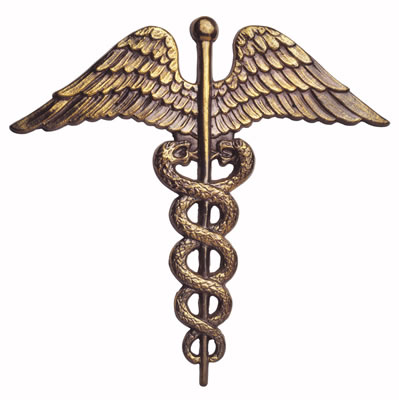This e-newsletter is sponsored by
|
|
Contact Us
| |
American Society of
Bariatric Physicians
2821 S. Parker Road, Ste. 625
Aurora, CO 80014
office 303.770.2526 | asbp.org
Staff
Laurie Traetow, CAE
Executive Director
laurie@asbp.org
Carly Crosby
Administrative Coordinator
carly@asbp.org
Heidi Gordon
Director of Marketing &
Communications
heidi@asbp.org
|
|
|
|
Obesity Medicine e-Weekly |
|
News
Thanks to everyone for a great conference in San Diego last week
 | |
Conference attendees learning patient-centered physical activities during Walk With the Doc.
|
On behalf of the staff and leadership of the Society, thanks to all of the attendees and speakers who helped make last week's ASBP Spring Obesity Conference one of the best! We look forward to seeing you again in October for the 63rd Annual Obesity & Associated Conditions Symposium.
Screen-Free Week continues through May 5

The Society is pleased to once again endorse Screen-Free Week (April 29-May 5), the annual celebration during which children, families, schools and communities turn off screens and turn on life. Please visit www.screenfree.org to learn more. Also, click here to read a clipping from Fox 9 in Minneapolis, which includes a quote from ASBP Vice President Dr. Deborah Bade Horn.
|
Obesity Action Coalition presents Helping your patients understand severe obesity
 "What is obesity? What is severe obesity?" "If I am diagnosed, what are my options? Are they covered by my insurance?" Patients with a diagnosis of severe obesity may ask these questions and many more. The Obesity Action Coalition (OAC) can help you navigate the way to understanding with the Understanding Severe Obesity brochure. This educational resource covers a variety of topics including measurements of severe obesity, risks associated with the disease, causes, treatment options, and information on gaining further access to treatment. For patients who may require more complex approaches to manage their weight-loss journey, this guide can help them understand their options from the outset. With your OAC membership (included with being an ASBP member), you have access to materials such as this brochure that can assist you in answering many of your patients' questions. Ordering copies of Understanding Severe Obesity is easy: simply fill out the online form. "What is obesity? What is severe obesity?" "If I am diagnosed, what are my options? Are they covered by my insurance?" Patients with a diagnosis of severe obesity may ask these questions and many more. The Obesity Action Coalition (OAC) can help you navigate the way to understanding with the Understanding Severe Obesity brochure. This educational resource covers a variety of topics including measurements of severe obesity, risks associated with the disease, causes, treatment options, and information on gaining further access to treatment. For patients who may require more complex approaches to manage their weight-loss journey, this guide can help them understand their options from the outset. With your OAC membership (included with being an ASBP member), you have access to materials such as this brochure that can assist you in answering many of your patients' questions. Ordering copies of Understanding Severe Obesity is easy: simply fill out the online form.
|

Obesity Updates: Click titles to view articles
Amadou, A., et al. Obesity Reviews, April 2013.
There is a large range of biological differences between breast cancers occurring in pre-menopausal compared to post-menopausal women. For instance, there is a trend towards an excess of estrogen receptor (ER)-negative, hormone-independent and aggressive tumor subtypes in pre-menopausal women; whereas, in post-menopausal women, there is a trend towards more ER-positive subtypes. Overweight and obesity have been clearly associated with an increased overall risk of breast cancer. These associations are consistent for post-menopausal breast cancer; however, there is still controversy on how this affects the risk of pre-menopausal breast cancer. A meta-analysis of all publications in humans of the associations between height, weight, body mass index (BMI), waist circumference, hip circumference or waist-to-hip ratio and pre-menopausal breast cancer was conducted. Results show that for BMI, each 5 kg/m2 increase was inversely associated with the risk of pre-menopausal breast cancer. After stratifying ethnic groups, the inverse association remained significant only among Africans and Caucasians, and, among Asian women, a significant positive association was observed. For waist-to-hip ratio, each 0.1 unit increase was positively associated with pre-menopausal breast cancer with the largest effect detected in Asian women. These results suggest that it is important to consider both fat distribution and ethnicity when studying pre-menopausal breast cancer.
Benden, C., et al. J Heart Lung Transplant, Feb 2013.
Most children who undergo lung transplantation have end-stage cystic fibrosis (CF) lung disease and are frequently diagnosed as being underweight. Severe malnutrition is considered a relative contraindication for lung transplantation in some pediatric lung transplant units. Interestingly, obesity is also considered a relative contraindication for lung transplantation according to current International Society for Heart and Lung Transplantation (ISHLT) guidelines. A study was conducted to analyze the ISHLT Transplant Registry to determine the prevalence of abnormal body mass index (BMI) in pediatric lung transplant candidates and the effect of an abnormal BMI on the outcome of children after lung transplantation. In the 897 recipients analyzed, a significant proportion of CF patients were underweight, whereas more non-CF patients were obese. Neither underweight nor overweight CF recipients differed in survival compared with recipients of normal-weight recipients. For non-CF recipients, being overweight/obese increased risk of death compared with normal-weight recipients. These data suggest that comprehensive body weight evaluations should be conducted at transplant assessment in children, and if patients are overweight, this should ideally prompt weight-loss strategies before listing for lung transplantation, if time allows losing weight.
Breslow, R.A., et al. Am J Clin Nutr. May 2013
Alcohol is consumed by about 70 percent of the U.S. population. In previous small studies, it has been shown that alcohol intake leads to an increase in energy intake from food on the day of drinking. This effect of alcohol on food intake has not been compared within subjects on a drinking versus non-drinking day, and food choices in these studies have been limited to what was available to them in a lab setting. The 2003-2008 National Health and Nutrition Examination Survey (NHANES) included two 24-hour recalls that were obtained generally 3 to 10 days apart. This information provided an opportunity to compare dietary intake on drinking compared with non-drinking days within individuals, allowing each person to act as one's own control (i.e., each person is matched to himself or herself), which removes confounding as a result of individual-level characteristics both observable (e.g., demographics and lifestyle) and unobservable (e.g., genetics and environment). These recalls were used to examine diets of 1,864 current drinkers who consumed alcohol on one of the 24-hour recalls but not the other. Results showed that on drinking (compared with non-drinking) days, men consumed an excess 168 non-alcohol calories, mostly in the form of higher intakes of total protein, total fat, saturated fat, monounsaturated fat, potassium and sodium. Men also had higher intakes of food groups, including meat, white potatoes and discretionary oil and solid fat, and lower intakes of total fruit and milk. Women did not consume excess non-alcohol calories but had higher intakes of total fat, monounsaturated fat, polyunsaturated fat, potassium and discretionary oil and solid fat and lower intakes of milk and milk products. It was concluded that these moderate drinkers had poorer diets on drinking days, which may serve as useful targets for public health efforts to improve dietary intake.
|
|
 Education Education
Registration now open: ASBP 63rd Annual Obesity & Associated Conditions Symposium

Online registration ASBP 63rd Annual Obesity & Associated Conditions Symposium at the Arizona Biltmore (Phoenix) on Oct. 9-13, 2013. Click here to learn more. Six new dates and locations announced: Earn 7 CME hours at the Obesity Basic Medical Treatment course  The Obesity Medicine Association, a division of the Society, is pleased to announce six more Obesity Basic Medical Treatment courses this year! Attendees earn 7 hours of continuing medical education (CME), plus the second and subsequent registrations received from the same office receive a $30 discount. The registration fee is $199, if received by the Wednesday prior to the course date. The course provides basic clinical information and tools to effectively treat obese patients and their related conditions. Click here to learn more, or download a registration form and read details about the course. Online registration is also available for these dates and locations: The Obesity Medicine Association, a division of the Society, is pleased to announce six more Obesity Basic Medical Treatment courses this year! Attendees earn 7 hours of continuing medical education (CME), plus the second and subsequent registrations received from the same office receive a $30 discount. The registration fee is $199, if received by the Wednesday prior to the course date. The course provides basic clinical information and tools to effectively treat obese patients and their related conditions. Click here to learn more, or download a registration form and read details about the course. Online registration is also available for these dates and locations:
- June 1 | Salt Lake City, Utah
- June 8 | Sacramento, Calif.
- June 15 | Rochester, N.Y.
- June 29 | Milwaukee, Wis.
- July 13 | Virginia Beach, Va.
- Aug. 3 | Providence, R.I.
|
|
|
|
|